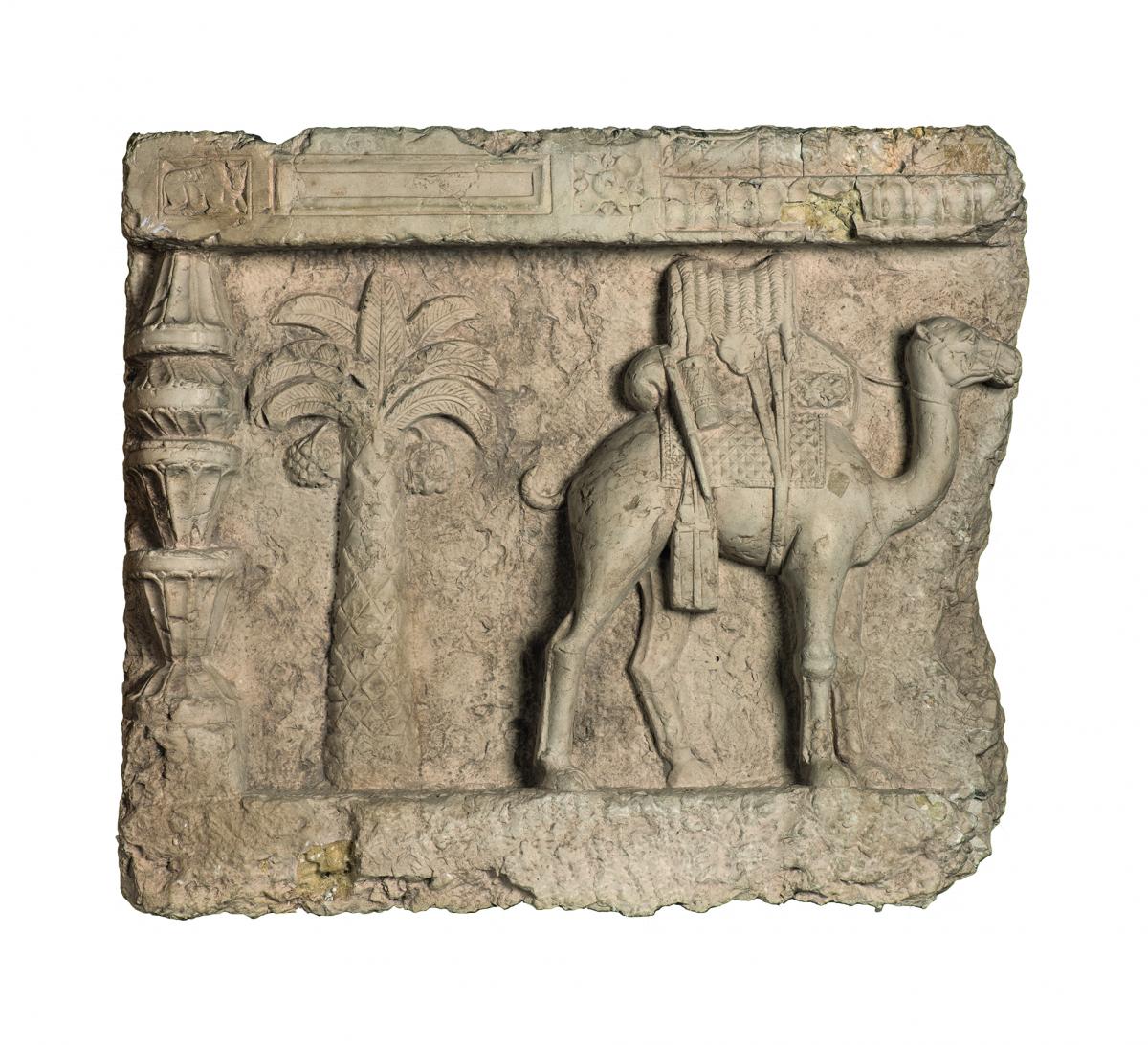This wonderful Cornish workshop and museum is dedicated to the legacy of studio pottery trailblazer Bernard Leach
Why Syria’s art matters
Why Syria’s art matters
28 Sep 2018
The civil war in Syria has been a constant feature in our media over the past few years, but among the horrific reports of death and suffering, and the resultant refugee crisis, the destruction of Syria’s cultural heritage has received less attention.
Major monuments, such as the 11th-century minaret of the Great Mosque of Aleppo, one of the earliest examples in the world, have been destroyed during the mainly urban battles. Historic sites have been disturbed, and treasures lost, by people digging for valuable objects to sell outside the country, the perpetrators often sponsored by Isis to finance military operations. Most shocking of all has been the intentional savaging and destruction of monuments by Isis, some blown up live on camera to gain the attention of the West.
The Museum of Islamic Art in Doha is now responding with an exhibition, Syria Matters, that will highlight the culture of Syria since the second millennium.
The show will include loans from foreign collections, as well as some of the finest objects in Doha’s museums. Visitors will be transported to some of the country’s most beautiful sites by immersive displays and paintings by artist-travellers, such as our own Edward Lear (1812–1888).
Edward Lear, View of Damascus, c. 1860 CE, oil on canvas
Although Lear is best known for his nonsense verse, he was a talented painter, and his travels through Syria in the middle of the 19th century resulted in spectacular depictions of the country. He describes his first sight of Damascus in a letter dated 27 May 1858 to his patron, Lady Waldegrave: ‘Imagine 16 worlds full of gardens rolled out flat, with a river and a glittering city in the middle, and you have a sort of idea of what the Damascus pianura is like.’
Key compass points
A long series of civilisations have left their mark on Syria, their visible remains stretching back into the Bronze Age. The foremost attraction of the country was its position on multiple trade routes: west across the Mediterranean Sea to North Africa and Europe; east through Iraq to Iran and East Asia; north through Anatolia and the Black Sea into Russia; and south into Arabia, the Red Sea and the great sea routes to the east, as well as the coast of East Africa. Palmyra, an important caravan city in the desert, located between the Euphrates and the Mediterranean, is a prime example of the importance of trade in Syria. One carving in the exhibition shows a heavily laden camel leaving the oasis city. It’s a sight that would have been familiar to residents.
 A Palmyrene Limestone Relief.The collection of H.E Sheikh Saoud bin Mohammed Al Thani
A Palmyrene Limestone Relief.The collection of H.E Sheikh Saoud bin Mohammed Al Thani
It was geography, again, that led the Umayyad dynasty to move the capital of the Islamic Empire to Damascus in the 660s, as the city was conveniently situated for expansion west (into Spain), east (into India) and north (into Russia). The Great Mosque of Damascus is a monument to this period. Symbolic of the status of the new power in the region are the glass mosaics that decorate its courtyard façade with a series of palaces bordering a river in a leafy paradise, said to have been created by mosaicists sent from Constantinople by the Byzantine emperor.
Syria has also been at the forefront of important technical innovations in the arts, especially in glass. Its glassmakers had an abundant supply of the raw materials needed for high-quality vessels. Indeed, Pliny the Elder (c.77CE) singled out the sand from Syria’s Mediterranean coast as the best in the Roman Empire for glassmaking. It was during the Roman period, too, that Syrian glassmakers discovered how to blow molten glass into vessels, enabling their wares to be made faster and more cheaply. Syrian Syria has also been at the forefront of important technical innovations in the arts, especially in glass. Its glassmakers had an abundant supply of the raw materials needed for high-quality vessels.
Indeed, Pliny the Elder (c.77CE) singled out the sand from Syria’s Mediterranean coast as the best in the Roman Empire for glassmaking. It was during the Roman period, too, that Syrian glassmakers discovered how to blow molten glass into vessels, enabling their wares to be made faster and more cheaply. Syrian workshops also experimented with decorative techniques to create luxury vessels (including lustre, sandwich and cameo glass), culminating in the gilded and enamelled vessels of the 13th and 14th centuries. Enamels would be applied to the finished vessel but, unlike vessels with modern enamels, which melt at low temperatures, the vessel had to be returned to the pontil (the glassmaker’s long rod) for the enamels to be fired in the furnace. Skill was required to avoid the vessel itself becoming soft and misshapen.
Medieval markets
Enamelled glass was just one of the luxuries available in the craft markets
of medieval Damascus. Others included gleaming brass vessels inlaid with gold; silver, pottery jars and dishes decorated in lustre; brocaded silks; and woven carpets. The impact these objects had on European visitors is conveyed best by Simone Sigoli, an Italian pilgrim who visited Damascus in the 14th century: ‘Verily if you had money in the bone of your leg, you would break it off to buy these things.’
Merchants exported quantities of these items to Europe via Venice where they had a profound effect on a continent just exiting the Dark Ages and hungry for luxuries. The Cavour Vase may have been made to appeal to this export market as
its history in noble European collections can be traced back at least 500 years.
These are just a few examples of how advanced – and important – the work
of Syria’s artists and craftsmen was. The country’s success has always been entwined with trade and the exchange of ideas; it has a long history of openness
and liberality towards people of other beliefs and nationalities. We must hope that it returns to that tradition soon.
Rachel Ward is an Arts Society Lecturer and former curator of the Department of Oriental Antiquities (Middle Eastern section), British Museum.
Header image: The Temple of Bel. Joseph Eid.AFP Getty Images
Discover more
Many institutions are working to assess the destruction in Syria. For an updated list of resources, including videos and satellite imagery, see here
Syria Matters will be at The Museum of Islamic Art in Doha from 23 November–23 August 2019
See
Palmyra: Loss and Remembrance, a collection of sculpture, engravings and photographs at the J Paul Getty Museum, Los Angeles, USA, until 27 May 2019
The new Albukhary Foundation Gallery opens at the British Museum on 18 October. It will be a major redisplay of the museum’s world-class collection of Islamic art, with objects from Nigeria to Indonesia, from the seventh century onwards
See more dazzling Islamic art, from textiles to carved woodwork, in Bath to Baghdad: Ellen Tanner’s Collection of Middle Eastern Art at the Holburne Museum, Bath, until 21 October. Ellen Tanner (1874–1937) was one of the first British women to travel solo to the Middle East
Click here for more news and features from The Arts Society
About the Author
The Arts Society
JOIN OUR MAILING LIST
Become an instant expert!
Find out more about the arts by becoming a Supporter of The Arts Society.
For just £20 a year you will receive invitations to exclusive member events and courses, special offers and concessions, our regular newsletter and our beautiful arts magazine, full of news, views, events and artist profiles.
FIND YOUR NEAREST SOCIETY
MORE FEATURES
Ever wanted to write a crime novel? As Britain’s annual crime writing festival opens, we uncover some top leads
It’s just 10 days until the Summer Olympic Games open in Paris. To mark the moment, Simon Inglis reveals how art and design play a key part in this, the world’s most spectacular multi-sport competition


